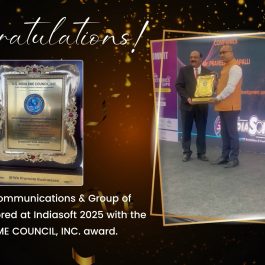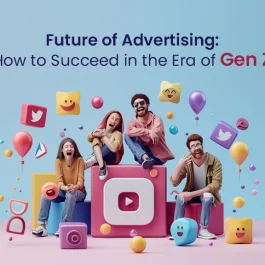4 min read
As a powerful tool for connecting with and influencing their target markets, social media has become increasingly crucial for businesses. Given the billions of active users across numerous platforms, the opportunity to connect with potential customers, develop brand recognition, and boost sales is enormous. You need a well-planned strategy to engage and convert business audiences on social media effectively. In this blog, we’ll explore the key steps to achieve this.
Table of Contents
What is Engagement on Social Media?
Social media engagement refers to users’ engagement with your social media profiles and content. The expression can characterize various actions on all social media platforms. Engagement might consist of, for instance:
- Popularity and Likes
- DMs, Comments, and Responses
- Sharing and retweeting
- Saves
- Clicks
- Mentions
There are other applications for engagement, which brings us to our next topic. Engagement is an excellent indicator of how your content affects your audience.
Why Social Media Participation is Essential
Why is participation so meaningful? Briefly, social media platforms state as such.
Recent years have seen a decline in the organic reach of almost all social media platforms. Higher social media engagement accounts are less significantly impacted, however. Facebook monitors “meaningful engagement” to determine which posts require additional attention.
In other words, social media posts with more thoughtful and active comments will receive more attention. As explained by Facebook:
There is evidence to support the notion that social interaction enhances well-being. However, people feel worse when they are passively reading or watching while browsing their Facebook feed and not interacting with anyone.
Particularly regarding support, your customers anticipate that you will also participate. The most popular option for customer service is social media; 8 billion Facebook messages are sent and received each month. Customers count on you to not just respond but to do so right away. 71% of Twitter users, according to research the SM platform commissioned, anticipate brand responses within an hour.
Positive interactions between brands and real people are always popular to observe and share. Customer loyalty can be increased by up to 25% when a company responds to a complaint on social media.
Although responding to everyone might feel intimidating, your clients will appreciate your excellent service. If a brand responds to customer service inquiries on social media, an average of 66% of people between 18 and 54 view it favorably. Every public exchange also counts as additional engagement, which multiplies the audience you can reach.
And finally, participation fosters connections. We use social media optimization to gather information from our community and customers about how we can enhance their experience.
With this direct connection to our target market, we can establish bonds, grow our capacity for empathy, and ultimately create better products for our users.

Guidelines for Engaging Your Audience on Social Media
Here are some guidelines for creating an effective SMM strategy campaign and some tools you can use to carry them out.
-
Identify Your Target Audience
Any successful social media strategy must start with a thorough understanding of your target audience. Create thorough buyer personas to pinpoint the characteristics of your ideal clients. Think about things like demographics, interests, problems, and online behavior. With the aid of this knowledge, you can modify your approach and content so that they appeal to your intended audience.
-
Select The Appropriate Social Media Platforms
Only some social media sites are created equally; only some will fit your company best. Find out which platforms are most frequently used by your target audience and choose those. As an illustration:
– The B2B and professional services sectors benefit significantly from LinkedIn.
– For businesses that cater to consumers, Facebook and Instagram are effective.
– For engagement and real-time updates, Twitter is helpful.
– Pinterest is useful for finding inspiration and visual goods.
-
Develop Appealing Content
Engagement on social platforms are centered on high-quality content. Create content for your audience that informs, entertains, or educates them. This includes things like blog posts, movies, infographics, and more. Maintain a unified style and tone throughout your writing.
-
Set up a Content Calendar
You can ensure a steady stream of interesting posts by using a content calendar to plan your content. You can also use it to coordinate your content with advertising campaigns and significant dates, including national holidays and business gatherings.
-
Use Visuals
Visual content attracts attention and is very shareable. To pique the interest of your audience, use high-quality pictures and videos. Engagement can also be increased using infographics, memes, and interactive content like surveys and quizzes.
-
Connect with your target audience
There are two ways to use social platforms. Instantly reply to all messages, comments, and inquiries. Open-ended questions, polls, and Q&A sessions can all be used to promote conversation. Building relationships with your audience promotes adherence and confidence.
-
Take advantage of paid advertising
Social media advertising can target particular demographics, interests, and behaviors. Robust advertising options are available on platforms like Facebook and Instagram. Invest in paid advertising campaigns to reach more people and turn leads into paying clients.
-
Monitor analytical data
To monitor the effectiveness of your content, keep an eye on your social media analytics. Metrics like reach, engagement, clicks, and conversions give us information about what is effective and what needs to be improved. Using these data-driven insights as a guide, modify your strategy.
-
Partner up and collaborate
Working with influencers or complementary businesses can increase your reach and credibility. A new audience interested in your goods or services can be introduced to your brand through partnerships and collaborations.
-
Offer Benefits
Ultimately, providing value is the key to engaging and converting business audiences on social media. Your writing should highlight the advantages of your goods or services while also addressing the needs and problems of your audience. Showcase your knowledge and illustrate the impact your company can have on people’s lives.
Conclusion
Strategic planning, high-quality content, and consistent engagement are all necessary for engaging and converting business audiences on social media over time. Your company can use social media marketing experts to its advantage to forge connections, encourage conversions, and enjoy long-term success by identifying your target audience, choosing the best platforms, and providing insightful content. To keep up with the constantly shifting SMM landscape, remain flexible, evaluate your efforts frequently, and be prepared to change your strategy.
Published: October 26th, 2023









